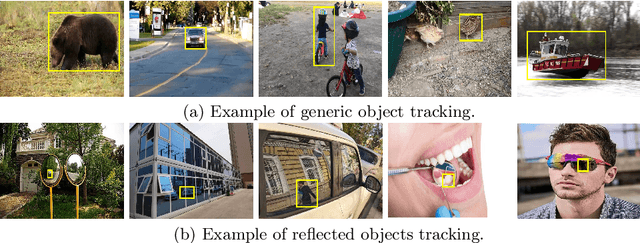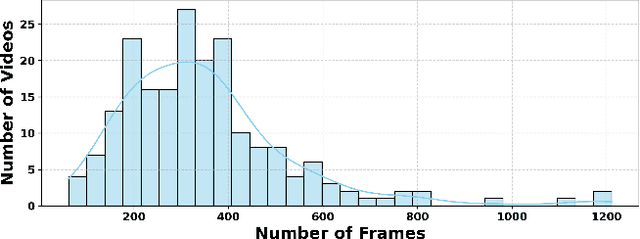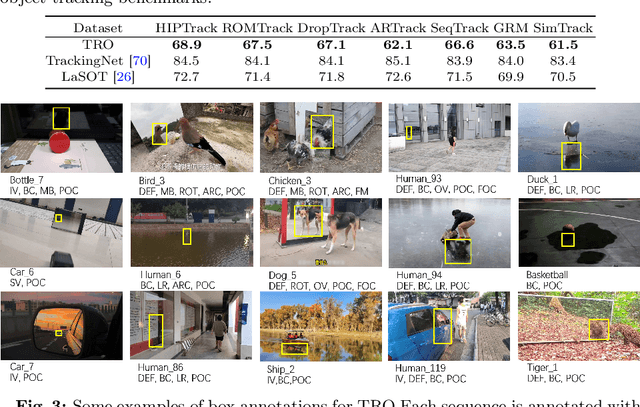Xiaoyu Guo
LCGC: Learning from Consistency Gradient Conflicting for Class-Imbalanced Semi-Supervised Debiasing
Apr 09, 2025Abstract:Classifiers often learn to be biased corresponding to the class-imbalanced dataset, especially under the semi-supervised learning (SSL) set. While previous work tries to appropriately re-balance the classifiers by subtracting a class-irrelevant image's logit, but lacks a firm theoretical basis. We theoretically analyze why exploiting a baseline image can refine pseudo-labels and prove that the black image is the best choice. We also indicated that as the training process deepens, the pseudo-labels before and after refinement become closer. Based on this observation, we propose a debiasing scheme dubbed LCGC, which Learning from Consistency Gradient Conflicting, by encouraging biased class predictions during training. We intentionally update the pseudo-labels whose gradient conflicts with the debiased logits, representing the optimization direction offered by the over-imbalanced classifier predictions. Then, we debiased the predictions by subtracting the baseline image logits during testing. Extensive experiments demonstrate that LCGC can significantly improve the prediction accuracy of existing CISSL models on public benchmarks.
ReFocus: Reinforcing Mid-Frequency and Key-Frequency Modeling for Multivariate Time Series Forecasting
Feb 24, 2025Abstract:Recent advancements have progressively incorporated frequency-based techniques into deep learning models, leading to notable improvements in accuracy and efficiency for time series analysis tasks. However, the Mid-Frequency Spectrum Gap in the real-world time series, where the energy is concentrated at the low-frequency region while the middle-frequency band is negligible, hinders the ability of existing deep learning models to extract the crucial frequency information. Additionally, the shared Key-Frequency in multivariate time series, where different time series share indistinguishable frequency patterns, is rarely exploited by existing literature. This work introduces a novel module, Adaptive Mid-Frequency Energy Optimizer, based on convolution and residual learning, to emphasize the significance of mid-frequency bands. We also propose an Energy-based Key-Frequency Picking Block to capture shared Key-Frequency, which achieves superior inter-series modeling performance with fewer parameters. A novel Key-Frequency Enhanced Training strategy is employed to further enhance Key-Frequency modeling, where spectral information from other channels is randomly introduced into each channel. Our approach advanced multivariate time series forecasting on the challenging Traffic, ECL, and Solar benchmarks, reducing MSE by 4%, 6%, and 5% compared to the previous SOTA iTransformer. Code is available at this GitHub Repository: https://github.com/Levi-Ackman/ReFocus.
Image-to-Force Estimation for Soft Tissue Interaction in Robotic-Assisted Surgery Using Structured Light
Jan 15, 2025Abstract:For Minimally Invasive Surgical (MIS) robots, accurate haptic interaction force feedback is essential for ensuring the safety of interacting with soft tissue. However, most existing MIS robotic systems cannot facilitate direct measurement of the interaction force with hardware sensors due to space limitations. This letter introduces an effective vision-based scheme that utilizes a One-Shot structured light projection with a designed pattern on soft tissue coupled with haptic information processing through a trained image-to-force neural network. The images captured from the endoscopic stereo camera are analyzed to reconstruct high-resolution 3D point clouds for soft tissue deformation. Based on this, a modified PointNet-based force estimation method is proposed, which excels in representing the complex mechanical properties of soft tissue. Numerical force interaction experiments are conducted on three silicon materials with different stiffness. The results validate the effectiveness of the proposed scheme.
LOCAL: Learning with Orientation Matrix to Infer Causal Structure from Time Series Data
Oct 28, 2024



Abstract:Discovering the underlying Directed Acyclic Graph (DAG) from time series observational data is highly challenging due to the dynamic nature and complex nonlinear interactions between variables. Existing methods often struggle with inefficiency and the handling of high-dimensional data. To address these research gap, we propose LOCAL, a highly efficient, easy-to-implement, and constraint-free method for recovering dynamic causal structures. LOCAL is the first attempt to formulate a quasi-maximum likelihood-based score function for learning the dynamic DAG equivalent to the ground truth. On this basis, we propose two adaptive modules for enhancing the algebraic characterization of acyclicity with new capabilities: Asymptotic Causal Mask Learning (ACML) and Dynamic Graph Parameter Learning (DGPL). ACML generates causal masks using learnable priority vectors and the Gumbel-Sigmoid function, ensuring the creation of DAGs while optimizing computational efficiency. DGPL transforms causal learning into decomposed matrix products, capturing the dynamic causal structure of high-dimensional data and enhancing interpretability. Extensive experiments on synthetic and real-world datasets demonstrate that LOCAL significantly outperforms existing methods, and highlight LOCAL's potential as a robust and efficient method for dynamic causal discovery. Our code will be available soon.
LiNo: Advancing Recursive Residual Decomposition of Linear and Nonlinear Patterns for Robust Time Series Forecasting
Oct 22, 2024



Abstract:Forecasting models are pivotal in a data-driven world with vast volumes of time series data that appear as a compound of vast Linear and Nonlinear patterns. Recent deep time series forecasting models struggle to utilize seasonal and trend decomposition to separate the entangled components. Such a strategy only explicitly extracts simple linear patterns like trends, leaving the other linear modes and vast unexplored nonlinear patterns to the residual. Their flawed linear and nonlinear feature extraction models and shallow-level decomposition limit their adaptation to the diverse patterns present in real-world scenarios. Given this, we innovate Recursive Residual Decomposition by introducing explicit extraction of both linear and nonlinear patterns. This deeper-level decomposition framework, which is named LiNo, captures linear patterns using a Li block which can be a moving average kernel, and models nonlinear patterns using a No block which can be a Transformer encoder. The extraction of these two patterns is performed alternatively and recursively. To achieve the full potential of LiNo, we develop the current simple linear pattern extractor to a general learnable autoregressive model, and design a novel No block that can handle all essential nonlinear patterns. Remarkably, the proposed LiNo achieves state-of-the-art on thirteen real-world benchmarks under univariate and multivariate forecasting scenarios. Experiments show that current forecasting models can deliver more robust and precise results through this advanced Recursive Residual Decomposition. We hope this work could offer insight into designing more effective forecasting models. Code is available at this Repository: https://github.com/Levi-Ackman/LiNo.
Camouflaged_Object_Tracking__A_Benchmark
Aug 25, 2024



Abstract:Visual tracking has seen remarkable advancements, largely driven by the availability of large-scale training datasets that have enabled the development of highly accurate and robust algorithms. While significant progress has been made in tracking general objects, research on more challenging scenarios, such as tracking camouflaged objects, remains limited. Camouflaged objects, which blend seamlessly with their surroundings or other objects, present unique challenges for detection and tracking in complex environments. This challenge is particularly critical in applications such as military, security, agriculture, and marine monitoring, where precise tracking of camouflaged objects is essential. To address this gap, we introduce the Camouflaged Object Tracking Dataset (COTD), a specialized benchmark designed specifically for evaluating camouflaged object tracking methods. The COTD dataset comprises 200 sequences and approximately 80,000 frames, each annotated with detailed bounding boxes. Our evaluation of 20 existing tracking algorithms reveals significant deficiencies in their performance with camouflaged objects. To address these issues, we propose a novel tracking framework, HiPTrack-MLS, which demonstrates promising results in improving tracking performance for camouflaged objects. COTD and code are avialable at https://github.com/openat25/HIPTrack-MLS.
Low-Light Object Tracking: A Benchmark
Aug 21, 2024Abstract:In recent years, the field of visual tracking has made significant progress with the application of large-scale training datasets. These datasets have supported the development of sophisticated algorithms, enhancing the accuracy and stability of visual object tracking. However, most research has primarily focused on favorable illumination circumstances, neglecting the challenges of tracking in low-ligh environments. In low-light scenes, lighting may change dramatically, targets may lack distinct texture features, and in some scenarios, targets may not be directly observable. These factors can lead to a severe decline in tracking performance. To address this issue, we introduce LLOT, a benchmark specifically designed for Low-Light Object Tracking. LLOT comprises 269 challenging sequences with a total of over 132K frames, each carefully annotated with bounding boxes. This specially designed dataset aims to promote innovation and advancement in object tracking techniques for low-light conditions, addressing challenges not adequately covered by existing benchmarks. To assess the performance of existing methods on LLOT, we conducted extensive tests on 39 state-of-the-art tracking algorithms. The results highlight a considerable gap in low-light tracking performance. In response, we propose H-DCPT, a novel tracker that incorporates historical and darkness clue prompts to set a stronger baseline. H-DCPT outperformed all 39 evaluated methods in our experiments, demonstrating significant improvements. We hope that our benchmark and H-DCPT will stimulate the development of novel and accurate methods for tracking objects in low-light conditions. The LLOT and code are available at https://github.com/OpenCodeGithub/H-DCPT.
Tracking Reflected Objects: A Benchmark
Jul 07, 2024



Abstract:Visual tracking has advanced significantly in recent years, mainly due to the availability of large-scale training datasets. These datasets have enabled the development of numerous algorithms that can track objects with high accuracy and robustness.However, the majority of current research has been directed towards tracking generic objects, with less emphasis on more specialized and challenging scenarios. One such challenging scenario involves tracking reflected objects. Reflections can significantly distort the appearance of objects, creating ambiguous visual cues that complicate the tracking process. This issue is particularly pertinent in applications such as autonomous driving, security, smart homes, and industrial production, where accurately tracking objects reflected in surfaces like mirrors or glass is crucial. To address this gap, we introduce TRO, a benchmark specifically for Tracking Reflected Objects. TRO includes 200 sequences with around 70,000 frames, each carefully annotated with bounding boxes. This dataset aims to encourage the development of new, accurate methods for tracking reflected objects, which present unique challenges not sufficiently covered by existing benchmarks. We evaluated 20 state-of-the-art trackers and found that they struggle with the complexities of reflections. To provide a stronger baseline, we propose a new tracker, HiP-HaTrack, which uses hierarchical features to improve performance, significantly outperforming existing algorithms. We believe our benchmark, evaluation, and HiP-HaTrack will inspire further research and applications in tracking reflected objects. The TRO and code are available at https://github.com/OpenCodeGithub/HIP-HaTrack.
JailBreakV-28K: A Benchmark for Assessing the Robustness of MultiModal Large Language Models against Jailbreak Attacks
Apr 03, 2024Abstract:With the rapid advancements in Multimodal Large Language Models (MLLMs), securing these models against malicious inputs while aligning them with human values has emerged as a critical challenge. In this paper, we investigate an important and unexplored question of whether techniques that successfully jailbreak Large Language Models (LLMs) can be equally effective in jailbreaking MLLMs. To explore this issue, we introduce JailBreakV-28K, a pioneering benchmark designed to assess the transferability of LLM jailbreak techniques to MLLMs, thereby evaluating the robustness of MLLMs against diverse jailbreak attacks. Utilizing a dataset of 2, 000 malicious queries that is also proposed in this paper, we generate 20, 000 text-based jailbreak prompts using advanced jailbreak attacks on LLMs, alongside 8, 000 image-based jailbreak inputs from recent MLLMs jailbreak attacks, our comprehensive dataset includes 28, 000 test cases across a spectrum of adversarial scenarios. Our evaluation of 10 open-source MLLMs reveals a notably high Attack Success Rate (ASR) for attacks transferred from LLMs, highlighting a critical vulnerability in MLLMs that stems from their text-processing capabilities. Our findings underscore the urgent need for future research to address alignment vulnerabilities in MLLMs from both textual and visual inputs.
Deep Learning Applications Based on WISE Infrared Data: Classification of Stars, Galaxies and Quasars
May 17, 2023Abstract:The Wide-field Infrared Survey Explorer (WISE) has detected hundreds of millions of sources over the entire sky. However, classifying them reliably is a great challenge due to degeneracies in WISE multicolor space and low detection levels in its two longest-wavelength bandpasses. In this paper, the deep learning classification network, IICnet (Infrared Image Classification network), is designed to classify sources from WISE images to achieve a more accurate classification goal. IICnet shows good ability on the feature extraction of the WISE sources. Experiments demonstrates that the classification results of IICnet are superior to some other methods; it has obtained 96.2% accuracy for galaxies, 97.9% accuracy for quasars, and 96.4% accuracy for stars, and the Area Under Curve (AUC) of the IICnet classifier can reach more than 99%. In addition, the superiority of IICnet in processing infrared images has been demonstrated in the comparisons with VGG16, GoogleNet, ResNet34, MobileNet, EfficientNetV2, and RepVGG-fewer parameters and faster inference. The above proves that IICnet is an effective method to classify infrared sources.
 Add to Chrome
Add to Chrome Add to Firefox
Add to Firefox Add to Edge
Add to Edge